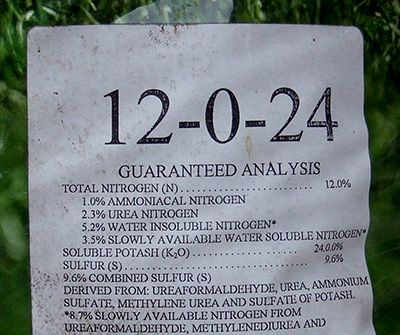Grow your own garlic this fall
October is the ideal time to plant garlic for harvest next July.

While the impending Halloween holiday may bring to mind the fabled ability of garlic to ward off vampires, gardeners are more likely to be thinking of planting it in hopes of a good crop of savory garlic bulbs next year. Fall is the time to plant garlic for next year’s harvest.
Most of the garlic found in supermarkets is the softneck variety, grown in warmer climates. Elephant garlic, also grown in warmer climates, is not true garlic, although it has a mild garlic flavor. It is actually more closely related to leeks. When it comes to growing garlic in cooler climates like Michigan, hardneck garlic is a more winter hardy choice. Hardneck varieties produce a flowering stalk (scape) while softneck varieties typically do not. The flowering stalks produce small, aerial cloves called “bulbils” that may be harvested and eaten. Flowering scapes may also be harvested and eaten just after they start to curl – they are excellent for stir fries. Hardneck garlic has fewer cloves, typically five to eight per bulb, than softneck garlic. Garlic is propagated by planting cloves. Half a pound of garlic for planting will usually provide enough for 15-20 plants.
It is best to purchase garlic from a producer. Good results are unlikely from planting garlic purchased at the grocery store. There are many garlic varieties to choose from. Two hardneck varieties that are recommended in Michigan are “Music” and “German White.”
Garlic prefers to grow in full sun and in well-drained soils that are high in organic matter – about 5 percent organic matter is ideal. The optimum soil pH for garlic is between 6 and 7. If the soil pH is below 5.8, lime is recommended. If you haven’t tested your soil within the last few years, Michigan State University Extension offers Soil Test Kit Self-Mailers for home gardens that can be purchased from shop.msu.edu. Limit the fall application of nitrogen to 25 pounds per acre of nitrogen (about 0.6 pounds per 1,000 square feet) as a pre-plant application. Follow the phosphorus and potassium recommendations of the soil test. Garlic has a moderate to high demand for nitrogen, so fertilizer can be incorporated before planting. Apply phosphorus and potassium according to soil test results and incorporate both before planting.
Planting in October will help get roots established before the ground freezes. Shoots may not emerge from the soil until the following spring. Separate the individual cloves no more than two days before planting. Plant them with the base of the clove 2-3 inches deep with the pointed end up. Row spacing may vary, but spacing 4 inches apart within rows is satisfactory. Spacing will depend on the size of your planting and the space you have available. Plants can be arranged in double rows 12 inches apart with spacing of 36 inches from the next set of double rows.
After planting, mulch with 3-4 inches of leaf or straw mulch. It will help with weed control, and will reduce fluctuating temperatures during the winter and early spring. Be sure to water in plants after you are done with the planting and mulching.
Make additional applications of nitrogen the following spring with 40 pounds per acre (0.9 pounds per 1,000 square feet) applied in March or early April when the garlic starts to grow, and another 0.9 pounds per 1,000 square feet around May 1. Don’t apply nitrogen after the first week in May or development of bulbs may be delayed. Garlic needs 1-2 inches of moisture per week while it is actively growing. Stop irrigation at least two weeks before the expected harvest date to avoid reducing garlic quality. Garlic bulbs are ready to harvest when 30-50 percent of the leaves have died back, usually sometime in July.
For more detailed information on growing garlic, go to the Gardening in Michigan website and download “Producing Garlic in Michigan” by Ron Goldy.
Calculating fertilizer rates
Fertilizer bags have three numbers on the bag showing the analysis of nitrogen (N), phosphorus (P) and potassium (K). These numbers reflect the percentage of each contained in the product. For example, an analysis of 20-10-10 contains 20 percent N, 10 percent P and 10 percent K. An example of a fertilizer that contains only nitrogen is urea, 46-0-0. It contains 46 percent N.
Fertilizer rates are usually given in pounds of actual nutrient per acre. There are 43,560 square feet per acre. To convert from pounds per acre to pounds per 1,000 square feet, divide pounds per acre by 43.56. If you have a smaller area you need to determine fertilizer amounts for, divide by 435.6 to get pounds per 100 square feet. As an example, if you needed 1 pound of N per 1,000 square feet, and were using urea as the source of nitrogen, then 1.0 pound N ÷ 0.46 pounds N per pound urea fertilizer = 2.17 pounds urea fertilizer. You would need 2.17 pounds of this product to supply one pound actual N.



 Print
Print Email
Email